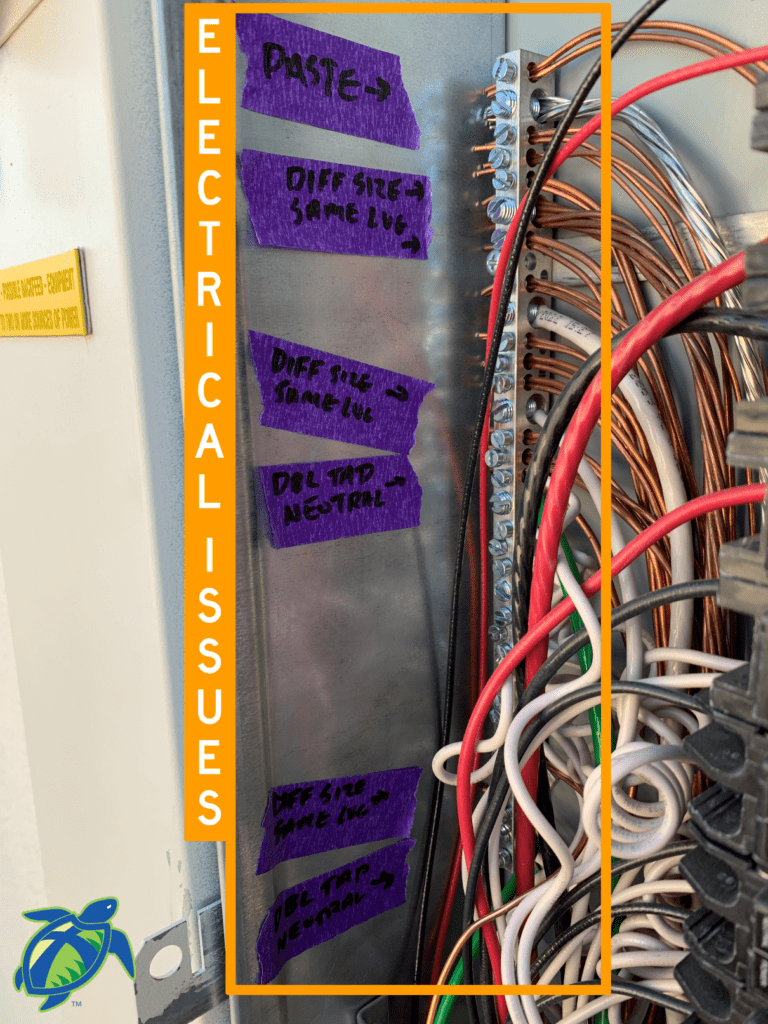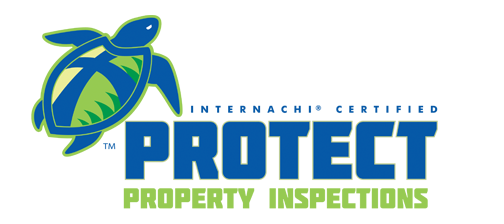Purchasing a home is one of the biggest financial decisions, and long-term investments, you’ll ever make. When it comes to new build homes, the value of a home inspection during the construction process is often underrated. Many buyers assume that builder expertise and municipal inspection schedules ensure quality. However, the importance of inspecting new build construction cannot be overstated. Independent inspections often uncover numerous defects that builders need to correct, which can save homeowners significant money and prevent major headaches down the road. Let’s dive into how a home inspection can provide substantial returns on investment – even for brand new homes!

In Arizona, all licensed contractors must adhere to workmanship standards outlined by the Registrar of Contractors (ROC). These standards are detailed and cover all aspects of new build construction. When a defect is discovered, or a standard is not met, builders are responsible for correcting the issue that is found to be beyond the allowable tolerances listed in the standard. If there’s a dispute over a defect, the homeowner can get the ROC involved. The ROC will send their inspector to evaluate the complaint and make a final determination on the correction.
Municipal inspection schedules require city or county inspectors to review the construction progress through various phases, ensuring the builder follows approved plans, building codes, and quality standards. However, our independent inspections often reveal dozens of issues that municipal inspectors missed, or builders left uncorrected. This is why we recommend having independent inspections at several key phases: pre-drywall, final walk-through, the 1 year warranty, and the 2-year warranty. Let’s take a detailed look at each of those phases: The Pre-Drywall Inspection is a critical step in the construction of a new home. This inspection takes place before the walls are sealed with drywall, offering a unique opportunity to examine the structural components, electrical wiring, plumbing, and HVAC systems while they are still exposed. Here’s why this inspection is so important:

1. Early Detection of Issues: A pre-drywall inspection allows for the early identification of potential issues that could be hidden once the walls are closed up. Inspectors can spot problems such as improper framing, incorrect placement of electrical wiring, plumbing leaks, and HVAC ductwork issues. Detecting these problems at this stage is crucial because they are much easier and less expensive to fix before the drywall goes up.
2. Ensuring Quality Construction: This inspection ensures that the construction is proceeding according to the approved plans and building codes. Inspectors verify that materials and workmanship meet quality standards, providing buyers with confidence that their home is being built to last. This step is particularly important for structural integrity, as any deficiencies in the framing can be addressed before they become serious issues.
3. Avoiding Future Repairs: By addressing potential issues early, a pre-drywall inspection can save home-buyers from costly repairs down the line. For example, an improperly installed electrical system or plumbing can lead to major problems after the home is completed. Ensuring these systems are correctly installed before the drywall is installed can prevent future headaches and expenses.
4. Improved Communication with Builders: The inspection report serves as a valuable communication tool between the buyer and the builder. It provides a detailed account of any issues that need to be addressed, ensuring that they are resolved to the buyer’s satisfaction before construction continues. This fosters transparency and accountability, helping to build a stronger relationship between the buyer and the builder.
5. Peace of Mind: Perhaps most importantly, a pre-drywall inspection offers peace of mind to home-buyers. Knowing that a professional has thoroughly inspected the structural and mechanical components of the home before they are hidden gives buyers confidence in their investment. It reassures them that their new home is being constructed correctly and to the highest standards, which is invaluable during such a significant purchase.

The Final Walkthrough Inspection is a critical step in the new build construction process. This inspection occurs just before the closing of the sale, providing a last opportunity to identify any issues or deficiencies that need to be addressed by the builder. In Arizona, a buyer has only 10 days from closing to report any damages to finished surfaces – like countertops, cabinets, and doors. If damage is reported prior to, or within that period the builder is responsible to make corrections, which often includes replacing the damaged item. However, when that 10 day period passes, the builder no longer has to take responsibility for any existing damage. This is likely the biggest value of a final walkthrough inspection for a buyer, but here are some other reasons it’s so important:
1. Ensures Completion of Work: The final walkthrough verifies that all construction work has been completed as per the contract and specifications. This includes checking that all agreed-upon features and finishes are in place, and that any outstanding tasks have been finalized. This ensures that buyers are getting exactly what they paid for, with no unfinished business left for them to handle.
2. Identifies Last-Minute Issues: Even with thorough inspections throughout the construction process, last-minute issues can still arise. The final walkthrough allows buyers to identify problems such as cosmetic defects, functional issues, or incomplete work. By catching these issues before closing, buyers can ensure that they are resolved by the builder, preventing future inconvenience and expense.
3. Confirms Functionality of Systems: During the final walkthrough, inspectors check that all systems in the home are functioning correctly. This includes testing electrical outlets, plumbing fixtures, HVAC systems, and appliances. Ensuring that everything works as it should protects buyers from unexpected repairs and ensures that their new home is move-in ready.
4. Facilitates Documentation and Negotiation: The final walkthrough inspection provides a detailed report of any issues found, serving as a crucial document for negotiations with the builder. Buyers can use this report to request repairs or adjustments before closing, ensuring that
the builder addresses all concerns. This documentation is invaluable in holding the builder accountable and ensuring that buyers receive a home free of defects.
5. Provides Peace of Mind: Most importantly, the final walkthrough inspection offers peace of mind to home-buyers. Knowing that a professional has thoroughly examined the home and verified that it meets quality standards gives buyers confidence in their investment. This peace of mind is essential for a smooth and positive transition into their new home, ensuring they can enjoy it from day one without worrying about hidden problems.

The 1 Year Warranty Inspection is an essential part of the new build construction process, providing significant value to home-buyers. This inspection takes place around the 11-month mark of the first year of home ownership, just before the builder’s typical one-year warranty expires. Here’s why this inspection is so important and the value it brings to home-buyers:
1. Identifies Warranty-Covered Issues: During the first year, various issues may emerge as the home settles and systems are used regularly. The 1 year inspection identifies defects or problems that have arisen since the purchase, such as cracks in the foundation, plumbing leaks, or HVAC issues. These problems are still covered under the builder’s warranty, allowing homeowners to request repairs at no additional cost.
2. Maximizes Warranty Benefits: The one-year warranty provided by builders is a valuable safeguard for new homeowners. The 1 year inspection ensures that buyers take full advantage of this coverage by documenting and reporting all issues before the warranty expires. This proactive approach ensures that all necessary repairs are addressed without out-of-pocket expenses for the homeowner.
3. Ensures Long-Term Home Quality: By identifying and fixing issues while they are still minor, the 11-month inspection helps maintain the quality and integrity of the home. Addressing problems early prevents them from escalating into more significant and costly repairs down the road. This preservation of home quality ensures the property remains in optimal condition, protecting the homeowner’s investment.
4. Provides Peace of Mind: Knowing that a thorough inspection has been conducted before the warranty expires gives homeowners peace of mind. It reassures them that their home has been carefully evaluated and any existing issues have been addressed by the builder. This confidence allows homeowners to enjoy their property without lingering concerns about hidden defects or potential future repairs.
5. Supports Future Resale Value: A well-maintained home retains its value better over time. The 11-month inspection helps ensure that the home remains in excellent condition, which is advantageous if the homeowner decides to sell in the future. Potential buyers will be reassured by the documentation of regular maintenance and repairs, making the home more attractive on the market and potentially increasing its resale value.
The 2 Year Warranty Inspection is an incredibly important opportunity to discover defective items covered by warranty before the warranty period expires. This inspection takes place around the 1-year-11-month mark and allows inspectors to review previously discovered defects reported to the builder to be corrected to ensure the corrections were completed to the ROC standards. Any previously reported items which remain uncorrected, or still do no meet the standard, can then be reported again to the builder as still defective. Similarly to the 1 Year Warranty Inspection, newly discovered items found in the 2 Year Warranty Inspection which do not meet the ROC standards can then be reported to the builder because the warranty period does not expire until the 2 year mark.

Homeowners derive immense value from these key phases of inspection in new build construction outlined in this blog. The pre-drywall inspection allows for early detection of structural and system-related issues while they are still accessible and easy to correct, ensuring quality construction and preventing future problems. The final walkthrough inspection, occurring just before closing, identifies any last-minute issues or deficiencies, ensuring that all work is completed to specifications and all systems are functional. This phase offers peace of mind and leverage to negotiate repairs or adjustments with the builder. The 1 year warranty inspection, identifies any issues that have emerged during the first year of occupancy, allowing homeowners to take full advantage of the warranty and get necessary repairs done at no additional cost. The 2 year warranty allows one last opportunity to review corrections of previously reported defects, as well as reporting newly discovered defects. Together, these inspections offer comprehensive protection and assurance, ensuring that new homes are built to high standards, free of defects, and are well-maintained from the start.
Protect Property Inspections is ready to provide you with a thorough, high quality, inspection through all these phases, delivering you the peace of mind that your new build is being constructed correctly. Call (480)808-2828 or visit our contact page.














